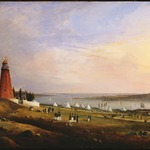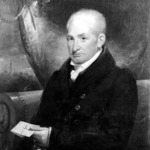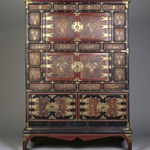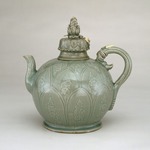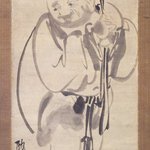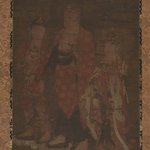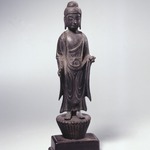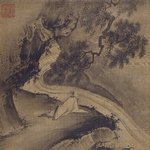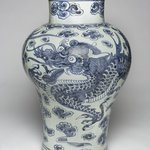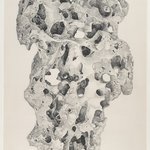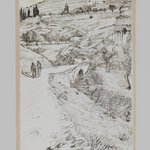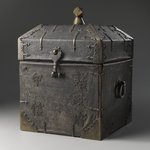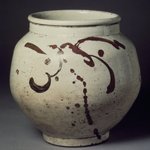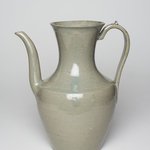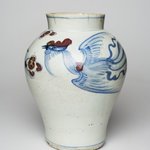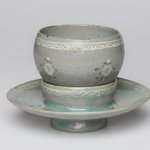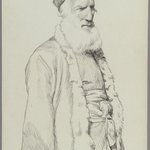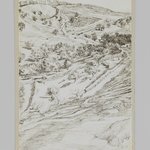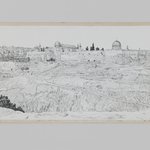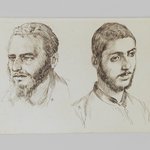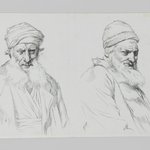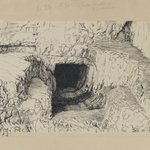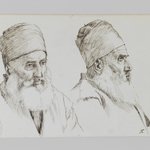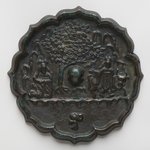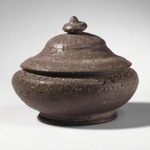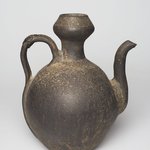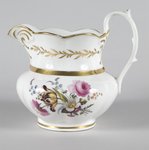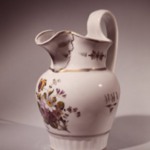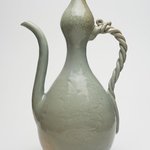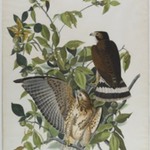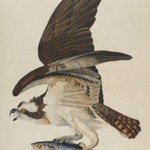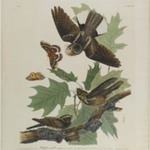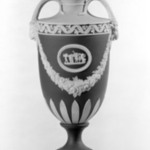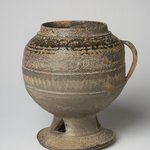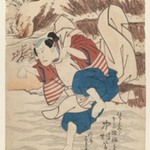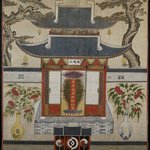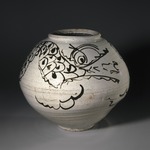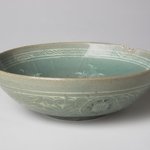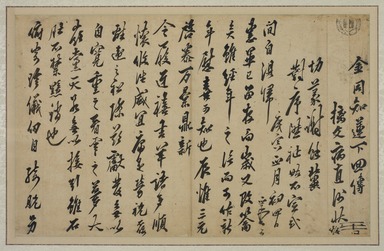
Letter
Gim Jeong-hui
Asian Art
On View: Asian Galleries, South, 2nd floor
MEDIUM
Ink on paper
DATES
1830
DYNASTY
Joseon dynasty
DIMENSIONS
frame: 20 3/4 × 32 3/4 × 1 1/4 in. (52.7 × 83.2 × 3.2 cm) (show scale)



SIGNATURE
Signed "Hi" and dated equivalent of 4 January 1830
COLLECTIONS
Asian Art
ACCESSION NUMBER
2022.37.4
CREDIT LINE
Gift of the Carroll Family Collection
PROVENANCE
Prior to 1980, provenance not yet documented; by 1980, acquired by Joseph and Roberta Carroll of New York, NY; 2021, loaned by the Joseph P. Carroll Trust and Roberta Carroll Trust to the Brooklyn Museum; 2022, gift of the Joseph P. Carroll Trust and Roberta Carroll Trust to the Brooklyn Museum.
Provenance FAQ
CATALOGUE DESCRIPTION
Letter written in loose, cursive but legible Chinese characters, on a horizontally oriented sheet of paper, formerly folded at the center, now matted and framed. Letter consists of 17 vertical lines of script with an old stamp at the top right.
Contents have been translated:
"I found your letter dated last year when I came back from P'yong Yang
recently. Although it was last year's, your news brightens up the new year, and
I understand how happy you must be. It's the first month of the year and
everything seems refreshed. Your future is auspicious, your words and thoughts
calm and orderly, and you are just and magnanimous in everything you do.
Much congratulations.
I greeted the new year in a foreign land, feeling anxious as I would feel at the
prospect of being separated from my parents. Furthermore, knowing that I can
not see my younger brothers and sisters hurts me so much that even if my
heart were made of stone, it would melt.
I appreciate very much the food you sent me. I know that it was sent with much
care. I shall write to you from time to time. For now, I bid you a happy New
Year."
Translation courtesy of Professor Edward W. Wagner, Korea Institute,
Harvard University
Gim Jeong-hui (alternate names Wandang and Chu'sa) was a great calligrapher and literatus during the last decades of the Joseon period. He was a member and founder of the Chusa school of scholarship (named after his sobriquet) which modeled itself on the Chinese Southern school. He traveled to China as a young man, and his calligraphy style refers to Chinese eccentrics and to Chan Buddhist forms.
EXHIBITIONS
MUSEUM LOCATION
This item is on view in Asian Galleries, South, 2nd floor
CAPTION
Gim Jeong-hui (Korean, 1786–1856). Letter, 1830. Ink on paper, frame: 20 3/4 × 32 3/4 × 1 1/4 in. (52.7 × 83.2 × 3.2 cm). Brooklyn Museum, Gift of the Carroll Family Collection, 2022.37.4 (Photo: Brooklyn Museum, 2022.37.4_PS11.jpg)
IMAGE
overall, 2022.37.4_PS11.jpg. Brooklyn Museum photograph, 2023
"CUR" at the beginning of an image file name means that the image was created by a curatorial staff member. These study images may be digital point-and-shoot photographs, when we don\'t yet have high-quality studio photography, or they may be scans of older negatives, slides, or photographic prints, providing historical documentation of the object.
RIGHTS STATEMENT
No known copyright restrictions
This work may be in the public domain in the United States. Works created by United States and non-United States nationals published prior to 1923 are in the public domain, subject to the terms of any applicable treaty or agreement.
You may download and use Brooklyn Museum images of this work. Please include caption information from this page and credit the Brooklyn Museum. If you need a high resolution file, please fill out our online application form (charges apply).
The Museum does not warrant that the use of this work will not infringe on the rights of third parties, such as artists or artists' heirs holding the rights to the work. It is your responsibility to determine and satisfy copyright or other use restrictions before copying, transmitting, or making other use of protected items beyond that allowed by "fair use," as such term is understood under the United States Copyright Act.
The Brooklyn Museum makes no representations or warranties with respect to the application or terms of any international agreement governing copyright protection in the United States for works created by foreign nationals.
For further information about copyright, we recommend resources at the United States Library of Congress, Cornell University, Copyright and Cultural Institutions: Guidelines for U.S. Libraries, Archives, and Museums, and Copyright Watch.
For more information about the Museum's rights project, including how rights types are assigned, please see our blog posts on copyright.
If you have any information regarding this work and rights to it, please contact copyright@brooklynmuseum.org.
RECORD COMPLETENESS
Not every record you will find here is complete. More information is available for some works than for others, and some entries have been updated more recently. Records are frequently reviewed and revised, and we welcome any additional information you might have.
